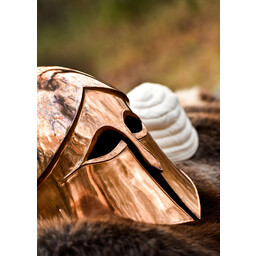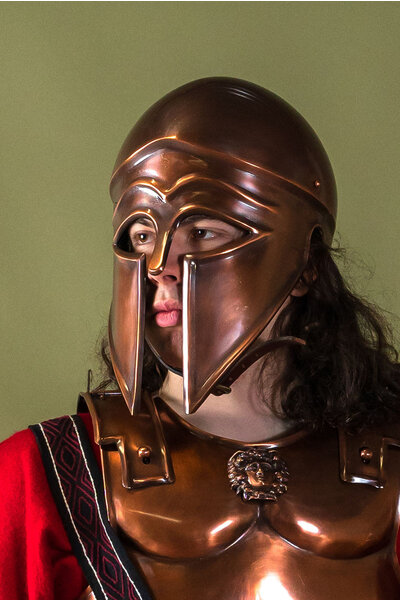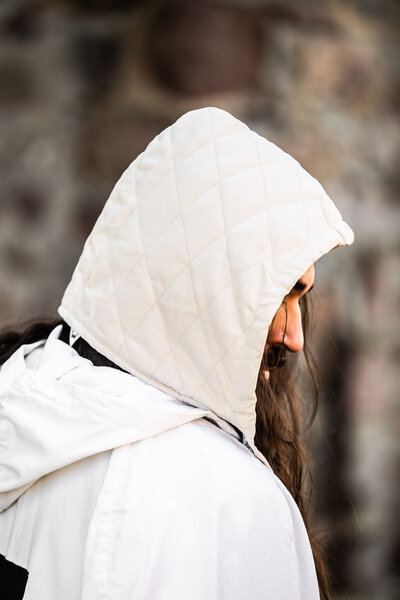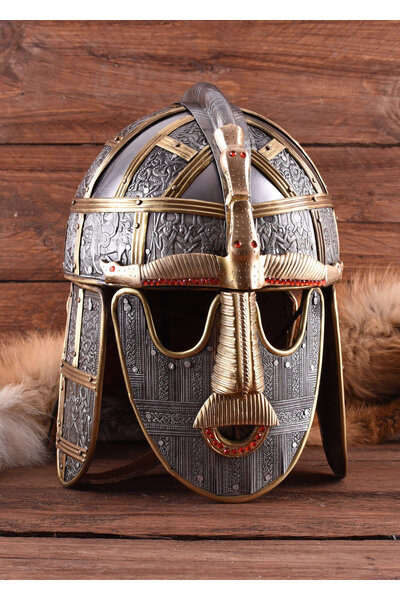Product description
This bronze helmet is a replica of a Corinthian helmet type A. Helmets like this were worn by Greek hoplites in combination with the musculata or lymotrax. The helmet has, just like the original, a slightly thicker part in the nasal piece that runs through the eyebrows.
The Corinthian helmet was originally the most popular helmet besides the pilos. It optimally protected the head, the neck and the face. This helmet was not only worn by the Greeks, but also by cultures from neighboring regions like the Etruscans, Epirus and the Macedonians.
This helmet is suitable for a head circumference up to 65 cm. It is completely handmade of 1,2 mm thick bronze. It weighs approx. 1,75 kg.
Product details:
Length (front to back): 23.5 cm
Width (ear to ear): 21 cm
Max. head circumference: 65 cm
Material: bronze
Thickness: 1.2 mm
Weight: 1.75 kg
Based on a historical original: yes
Transport weight (gram): 3000 *
Maintenance & care
Prevent rust and corrosion by oiling your armour regularly. Remove rust easily with black sandpaper.
This item is produced in limited quantities only. This means that every piece is unique. Sizes & finish may vary lightly from piece to piece.
Tip: How to adjust the finish of your armour and weaponry
Luxurious (polished)- polish the steel with metal polish or toothpaste. You can even give the item a mirror-like polish. Test on a small surface first!
Handmade (matte)- soak the steel in cola for 40 minutes to 20 hours. Check regularly and treat with black sandpaper.
Antique (patinated) leave the steel to rust for some time in a damp environment, preferably outside. Remove the red layer of rust, to reveal the corroded top layer.
Please note. After finishing the product yourself, the warranty and return right expire. Celtic WebMerchant is not responsible for the obtained result.
Packaged with 100% recycled material
When packaging this item, we exclusively use 100% recycled plastic and recycled paper/cardboard from FSC certified forests. We reuse a large part of the material directly without the intervention of a recycling process.
Recycle the material by separating your waste:
1. Cardboard: separate or reuse your paper.
2. Plastic cushions, clothing bags and plastic tape: separate or reuse your plastic. If possible, pierce the cushions with a volume reduction needle.
3. Paper packaging for jewelry and small items: these have a plastic inner layer. Remove these, then separate your paper and plastic.
























